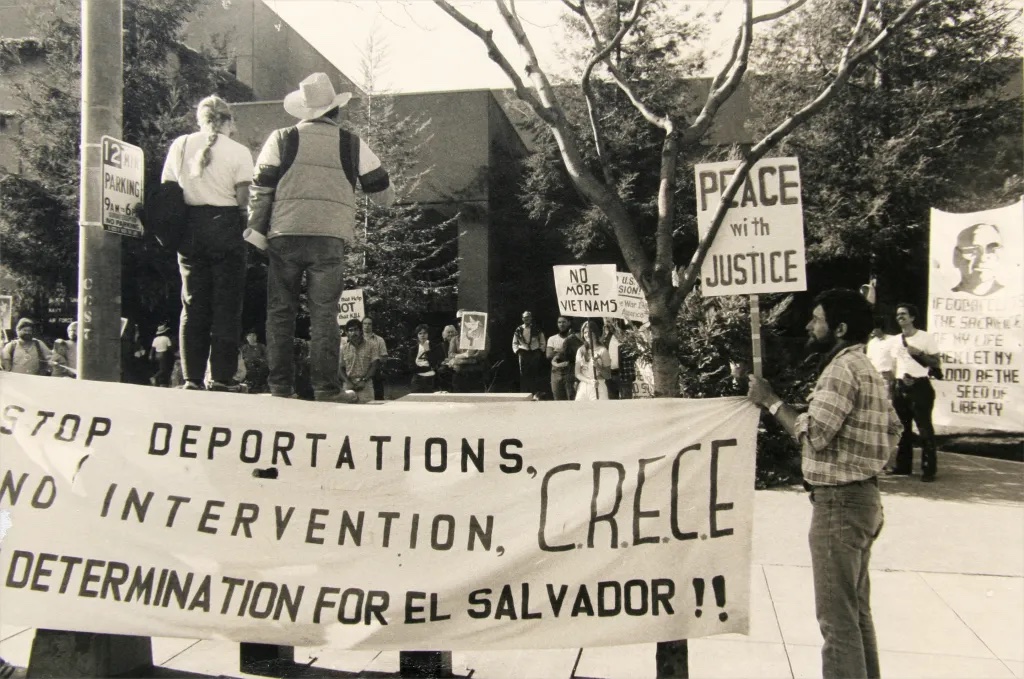Los Angeles was the first city to pass a sanctuary policy in 1979, instructing police officers not to concern themselves with individuals’ immigration status. Then, on 24 March 1982, five Bay Area churches and one church in Tucson, Arizona held coordinated press conferences in which they announced their intention to offer safe haven to undocumented Central American refugees who requested protection from deportation. The Sanctuary movement quickly spread across the US. By 1985 over 500 churches and synagogues were active members of the Sanctuary network. In February 1985 Berkeley declared itself a Sanctuary City for undocumented refugees. San Francisco followed.
The Sanctuary City movement faced fierce backlash. Almost immediately, the US government threatened to cut off federal funding to San Francisco if the city did not soften its Sanctuary City ordinance. Determined to crack down on the Sanctuary Movement, the US government also launched Operation Sojourner, sending paid informants into sanctuary communities. In what became known as "The Sanctuary Trials," dozens of defendants charged with alien smuggling claimed to be upholding the US Constitution and International Law through their acts of civil disobedience. Although they lost their cases, the defendants won enormous public sympathy for their cause. This helped to shift public opinion, laying the ground for a more sympathetic policy framework to emerge. In 1990, Salvadoran and Guatemalan migrants were declared eligible to apply for Temporary Protected Status, shielding them from deportation.
In 2017 California was declared the first Sanctuary State in the nation. However, since taking office in January 2025, the second Trump administration has directly targeted “sanctuary jurisdictions”, demanding that they cooperate with federal immigration enforcement efforts, as part of coordinated policy intended to dramatically increase immigrant deportations. The administration has also revoked Temporary Protected Status for migrants, including those from Venezuela, Honduras and Nicaragua.

